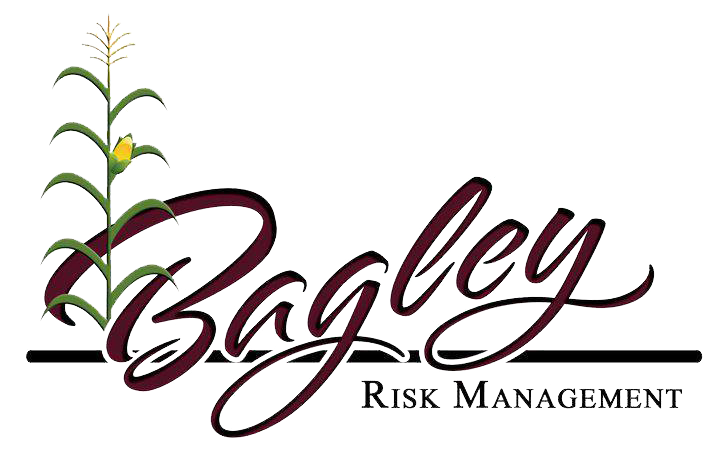The Best Strategy To Use For Bagley Risk Management
The Best Strategy To Use For Bagley Risk Management
Blog Article
Top Guidelines Of Bagley Risk Management
Table of ContentsThings about Bagley Risk ManagementThe Only Guide to Bagley Risk ManagementBagley Risk Management for BeginnersRumored Buzz on Bagley Risk ManagementIndicators on Bagley Risk Management You Need To Know
This method, if rates do drop listed below that break-even factor by the end date, policyholders are secured against a loss. This is very comparable to the means feedlots run, though they make use of a standard bush. Once a breeder agreements their cattle with a feedlot, they hedge those cattle to secure in the profit point.This will be offset by the enhanced value of the livestock., breeders secure versus a decline in the futures board, yet do not shed out on the greater return when rates go up.
They do this by choosing a lower percent of the projected ending worth - Cattle insurance. This is a great technique for those trying to find reduced premium rates or that have a greater threat resistance because of solid financial health and wellness. This technique may not protect profitability, but it can shield versus severe market decreases
There is not a great deal of protection or protection on a month-to-month basis, but if there is a serious crash, manufacturers have the assurance that originates from understanding they will only be accountable for a particular quantity out of pocket. Simply bear in mind, expect the most effective but plan for the worst.
Excitement About Bagley Risk Management

The use of LRP as protection for backgrounded cattle, or livestock on feed, aids minimize that threat by safeguarding the expected value of the animals. Feeder livestock can be hidden to a 900-pound predicted end weight and fed cattle can be concealed to a 1,400-pound end weight. With several weight classes to pick from, it is possible to cover pets through the barnyard to the packer rail.
Applications can take several days to process and merely loading one out does not lock the applicant right into a policy. When the application is authorized and all set, the LRP recommendation, with its end day and projected ending value, can be secured in swiftly. This permits ranchers to cover calves when the price is right for their market danger monitoring goals.
Photo Courtesy USDA-NRCS Prices for calf bones, feeder livestock and completed livestock have established some brand-new documents this loss and very early winter season. A combination of situations has precipitated these historic prices. There is currently a great deal of mindful optimism for cow-calf manufacturers as they check out the future.
Our Bagley Risk Management Diaries

There are some advantages to producers in utilizing LRP insurance policy as compared to a standard feeder cattle contract or purchase of an alternative - Livestock risk protection calculator. One is the versatility in the variety of cattle that can be insured. There is no reduced restriction to the number of cattle that can be insured
There is no commitment to sell cattle on which you have actually acquired LRP Feeder Livestock protection. You might select to keep ownership and still be eligible for the indemnity must the Actual End Worth drop below your Coverage Cost. You may market livestock covered by LRP at any moment, provided the transfer of ownership does not occur even more than 60 days prior to the LRP Agreement End Day.
If livestock die and your Ag, Threat Advisor is notified within 72 hours of you discovering of the death, the protection stays in impact, and the manufacturer is qualified for indemnities as a result of rate loss, even on those pets which died. Yes! Calf bones can now be covered prior to hooves hit you can check here the ground.
Our Bagley Risk Management Diaries

Applications make sure first-time clients can be pre-approved to create an LRP policy It is complimentary! Action 2) Lock in a Special Protection Recommendation (SCE) when you discover a quote that satisfies your objectives (LRP Insurance). Together, we'll secure your financial investment.
With the relentless variation and unpredictability of the market, Animals Threat Defense (LRP) is something all cattle producers ought to think about. The key objective of LRP is to protect against the unforeseen down cost activity in the industry by establishing a base upon any given date and sort of livestock you desire to insure.
Bagley Risk Management - Questions
There are a selection of coverage level alternatives varying from 70 to 100 percent of the expected finishing worth (https://businesslistingplus.com/profile/bagleyriskmng/). At the end of the picked insurance period, if the actual finishing worth is listed below the insurance coverage cost, you will certainly be paid an indemnity for the difference in price. Producer anticipates to market 1,000 head of 11cwt livestock and picks insurance coverage of $66
As of 2020, LRP (Livestock) is currently offered in all states when the market is offered. Fed Cattle with ending weights in between 1,000lbs-1,400 lbs that will be marketed for massacre near the end of the insurance coverage period.
Report this page